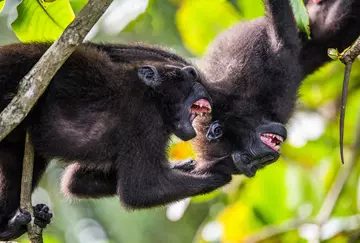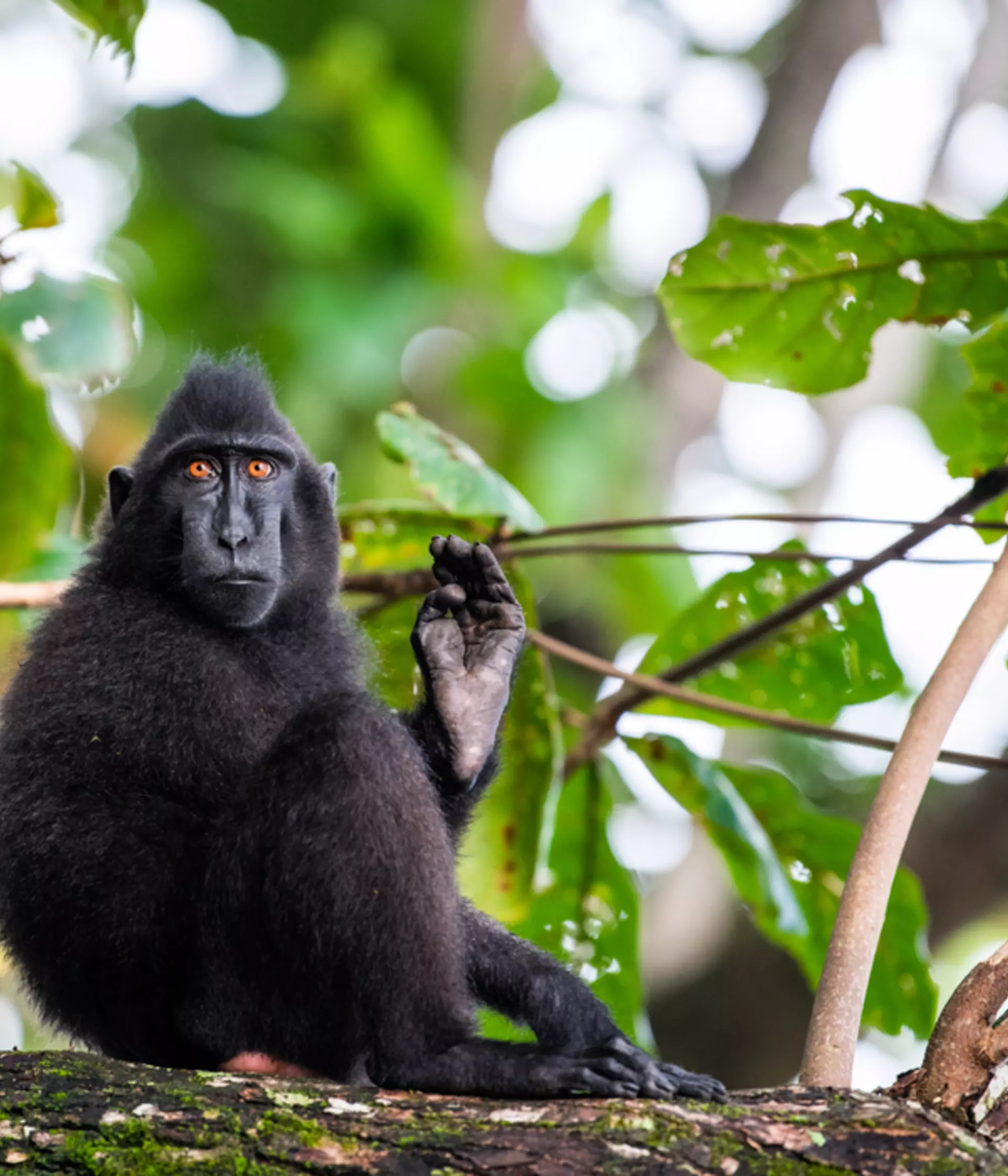
Monkey or ape?
Sulawesi crested macaques might not look like a monkey, but they actually have a vestigial tail that's just 2cm long. They're one of the smallest macaque species, and weigh between 3.6 to 10.4 kg.

Macaque communication
Flipped lips and clenched teeth shows friendship or play while yawning is a threat display. If the crest of the macaque is raised, it means they are excited. While if a macaques show their teeth and grimace, it's a threat.
Sulawesi crested macaque diet
These macaques are frugivorous, which means they mainly eat raw fruit. 70% of their diet is made up of fruits, while they also eat leaves, seeds, fungus, insects and even birds and their eggs.

Sulawesi crested macaque threats
Bushmeat hunting is a big problem for the Sulawesi crested macaque, as they are served at celebrations and religious occasions like Christmas. They're also hunted as a pest in their native Sulawesi, because they are able to devastate crop fields and put people's livelihoods at risk. Farming has fragmented and destroyed lots of macaque habitat, making conflicts with people more frequent. Some Sulawesi crested macaques are also caught for the pet trade, which is a big problem many primates are facing.
There is a large population of almost 100,000 island on Bacan Island in Indonesia, but they are not actually native to this island, so remain Critically Endangered on the IUCN Redlist because they are so at risk in their native range.
Animals at Monkey Forest
Anoa
A dwarf buffalo, anoas are the smallest of all cattle species and our scientists have been working to protect them.
François' langur
François' langurs have declined by over 50 percent over the last 36 years, and now just 2000 individuals remain.
